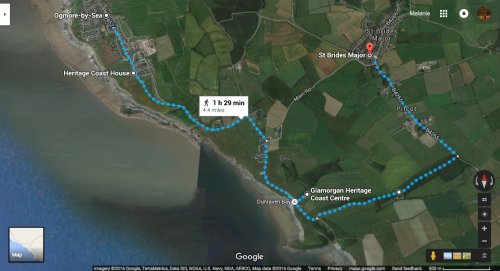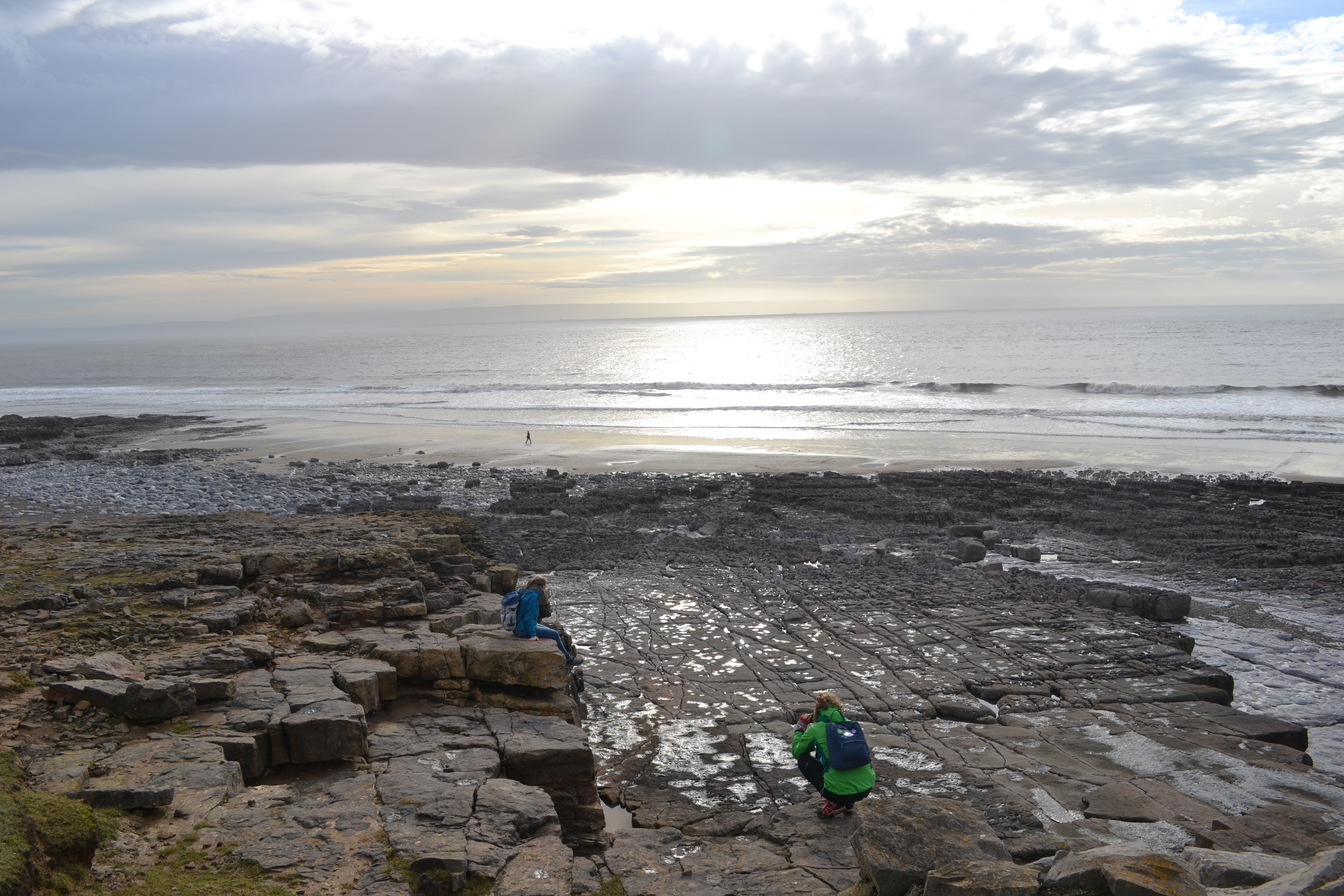The sea, the sea, the sea. It rolled and rolled and called to me. Come in, it said, come in.
– Sharon Creech, The Wanderer
Come in, said the Celtic Sea; specifically, the Bristol Channel. And I said, sure! Except it was pretty cold and none of us packed our wetsuits, so the sea had to settle for me loving it from afar. What I’m trying to say is my friends and I hiked the Welsh Heritage Coast from Ogmore to St. Brides Major, and it was a glorious day.

To get to Ogmore-by-Sea from Cardiff, you have to take a train to Bridgend. In Welsh this little city is called Pen-y-bont al Ogwr, or “the main bridge on the river Ogmore”—it’s not huge, but it’s significant in Welsh history. Iron-Age Celts buried warriors here, giving way to Roman and Norman invasion (can you tell I’m taking a history course at Cardiff?). Eventually, Bridgend earned a reputation as an important center of both agriculture and commerce—and this is the version of the city we encountered on Saturday morning, perfect for a cheeky* pre-hike cappuccino.
Post-caffeine but with time to spare before our bus left, we wandered central Bridgend and turned into an alleyway plastered with murals and poetry. Happening upon street art can be better than ambling around a museum, and based on the vibrant walls, Bridgend is home to some killer artists.
At last our bus rolled in and we rolled off to Ogmore-by-Sea. I had no idea what to expect, but my hazy conception of “the sea” probably comprised a mix of a rocky Atlantic shoreline and a soft Venice Beach…beach. Needless to say, Ogmore caught me off guard in the best way.
Every shade of green and brown, blue and gray, rolling and rocky not in a “beach is made of rocks” way, but in a “huge grassy cliffs peering over the sea” kind of way. Signs at the bus stop informed us that these rocks were laid down from the Carboniferous all the way through the Jurassic periods** so yeah, they know what they’re about.
We hiked down from the bus and up into the cliffs, and the sun (for dramatic effect) finally started peeking out. Every time I thought we’d reached the absolute apex of beauty, we rounded a corner and the coastline outdid itself. Surfers collected in the sea’s wavier spots; an elderly couple walked their dogs down on the beach; in the lowlands the rocks flattened out and cracked like petrified mud, sporting shallow gleaming pools of ocean. Magical.
Onward and upward, the cliffs got steeper (and my friend Christian chose to blatantly ignore the “danger, keep away” signs):
Despite the chill, I was coatless and sweating by the time we reached the Heritage Coast Centre and stopped for a snack.
Hydrated and fed, we rambled—it seems like the best word for the landscape—away from the coastline and into the ruins of Dunraven Castle (castle #2 for me, if you’re playing along at home). Dunraven, or Dwnrhefn, consists of a small tower overlooking a walled garden, still planted with rosemary and lavender.
With the sun back to its usual intensity (i.e., none), we began the final leg of our journey.
Here arose some concerns. Fields aren’t exactly bursting with landmarks, and we took a lot of paths like this one:
…without being sure if they led to freedom or despair.
Luckily, after quite a bit of a ramble, two great things happened: 1) we saw our first sheep!
and 2) we followed the sheep onto a farmstead, which sat alongside a road, which led to St. Brides Major, where the bus arrived—and the rain started—just as we did. We plopped onto our seats gratefully, raindrops already drumming on the windows. We were heroes. And miles behind us, but with a sound I won’t forget, the Celtic Sea rolled on.
Ta for today,
Mel
*cheeky isn’t just for Nando’s! I still can’t quite explain the full meaning of this word, but I think I’m starting to get an intuition about when to use it.
** 359 – 150 million years ago.


























